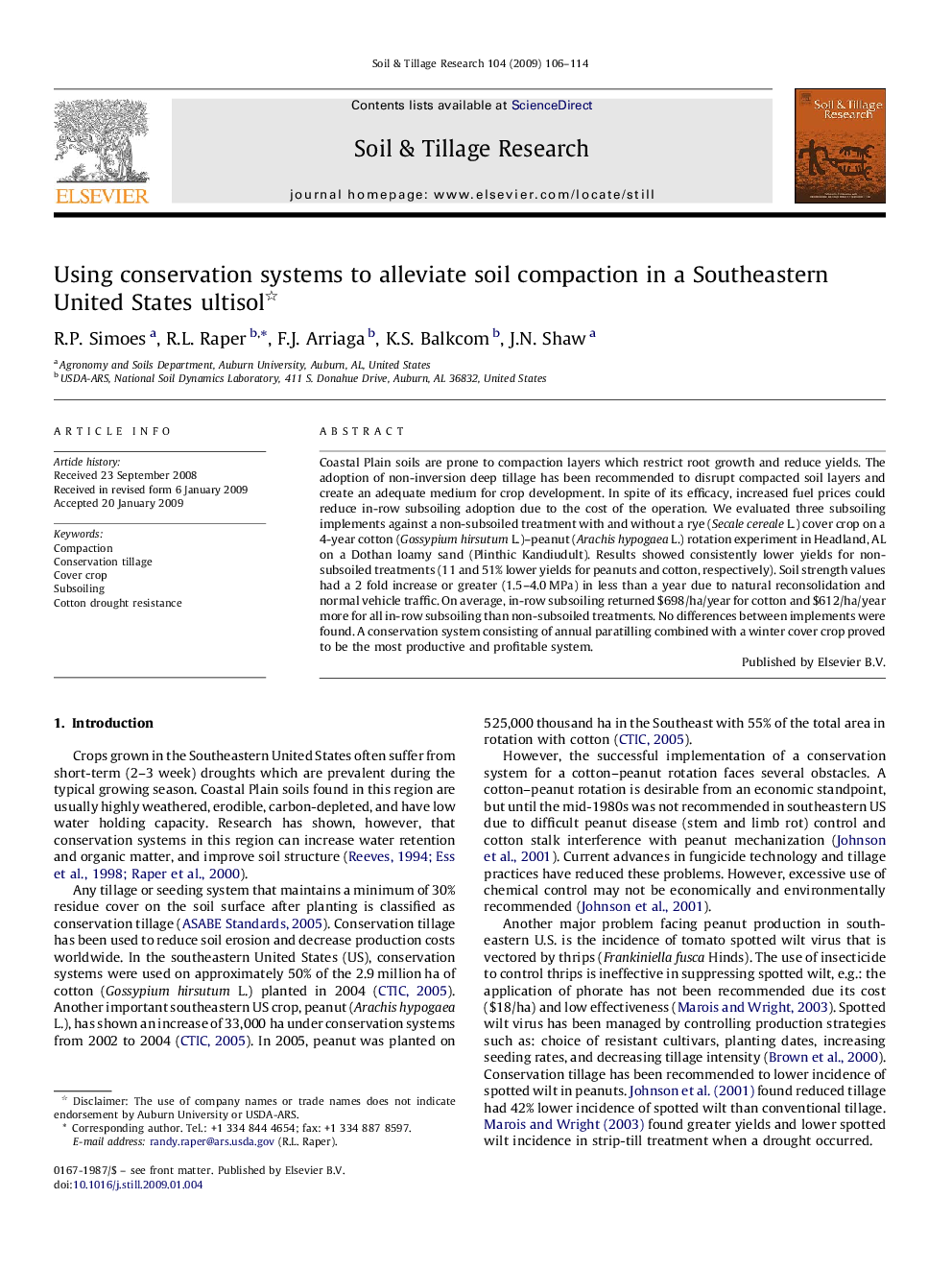| Article ID | Journal | Published Year | Pages | File Type |
|---|---|---|---|---|
| 306397 | Soil and Tillage Research | 2009 | 9 Pages |
Coastal Plain soils are prone to compaction layers which restrict root growth and reduce yields. The adoption of non-inversion deep tillage has been recommended to disrupt compacted soil layers and create an adequate medium for crop development. In spite of its efficacy, increased fuel prices could reduce in-row subsoiling adoption due to the cost of the operation. We evaluated three subsoiling implements against a non-subsoiled treatment with and without a rye (Secale cereale L.) cover crop on a 4-year cotton (Gossypium hirsutum L.)–peanut (Arachis hypogaea L.) rotation experiment in Headland, AL on a Dothan loamy sand (Plinthic Kandiudult). Results showed consistently lower yields for non-subsoiled treatments (11 and 51% lower yields for peanuts and cotton, respectively). Soil strength values had a 2 fold increase or greater (1.5–4.0 MPa) in less than a year due to natural reconsolidation and normal vehicle traffic. On average, in-row subsoiling returned $698/ha/year for cotton and $612/ha/year more for all in-row subsoiling than non-subsoiled treatments. No differences between implements were found. A conservation system consisting of annual paratilling combined with a winter cover crop proved to be the most productive and profitable system.
